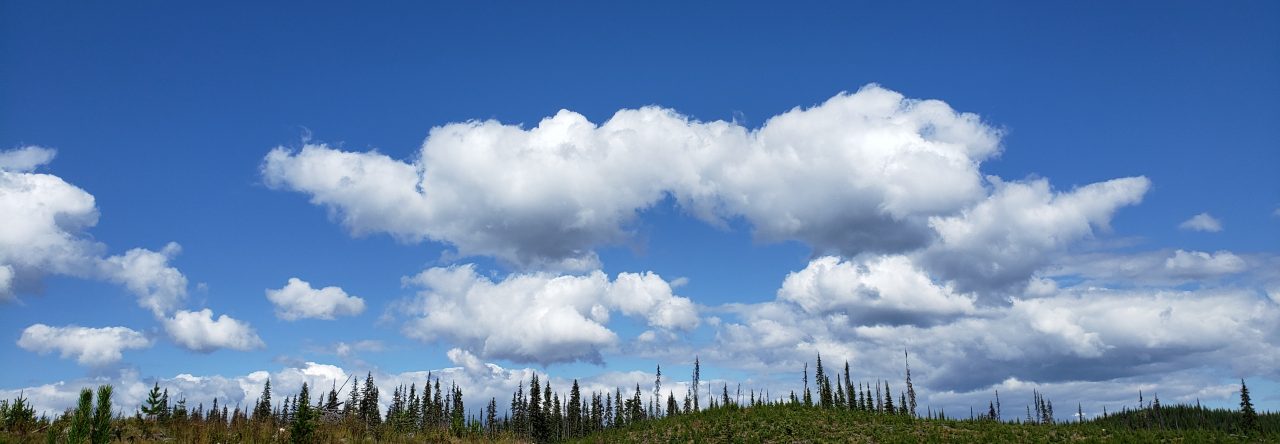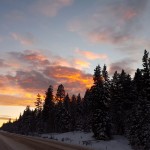Originally published as a column in NewsKamloops on January 8, 2016.
 Soon after we arrived in Transylvania my youngest had set up shop in a corner of my sister’s yard to do one of the things he likes the most: forging. It’s not quite what you’d imagine a 9-year-old doing and yet he loves the concept, enjoys the time spent learning about fires no matter how cold it is outside and every step adds a new layer of appreciation for manual work and for the things people can make if only they take the time.
Soon after we arrived in Transylvania my youngest had set up shop in a corner of my sister’s yard to do one of the things he likes the most: forging. It’s not quite what you’d imagine a 9-year-old doing and yet he loves the concept, enjoys the time spent learning about fires no matter how cold it is outside and every step adds a new layer of appreciation for manual work and for the things people can make if only they take the time.
He learns about durability in a world that becomes more disposable by the day. It’s a valuable lesson often packed with a blister here and there, sweat and time; lots of time spent learning and making things. Also, researching the next step in learning.
I remember the first time we went to Fort Langley during the time we still lived in Vancouver, the boys were four and nine at the time. The blacksmith’s shop was the main attraction for them. And why not? To see a piece of metal being transformed through the sheer power of heat and by the hard work of a strong arm into a unique candle holder was fascinating.
And yes, we still have the candleholder. It’s a beautiful reminder.
That day opened the topic that has become a mainstay: blacksmithing and forging. Who does it, where can you learn about it and where can one find people who carry on the trade?
Well, we found a couple in Barkerville. Our trip last May saw the boys perched on the blacksmith’s workshop fence, sun and all, just to hear stories about the trade and observe the process of how each piece comes to be. They saw pieces of bar stock curled into pendants and hooks and tools that the people of then needed for everyday life.
Trades are something of a lost art for the most part. We live in the days of 3D printers and cheap offshore labour (unethical often but then again ethics often gets in the way of money making so the issue is conveniently obscured by justification) and that means that trades that create cradle-to-grave products to be sold at fair prices may be slowly disappearing unless we make sure they don’t. And we cannot allow that to happen because we have too much to lose.
Our recent trip to Europe added more to the argument. I read about an elderly man up north who recently passed away. He was known for the beautiful traditional wooden gates he made all his life. I listened to him saying that he leaves but a handful of people who will carry on the trade.
He also talked about the gates and other unique woodwork he made. Far from being ‘just a…’, the things him and others make in the area are stories. Of times past, stories of centuries-old faith and values, joy and sorrow, stories of life unfolding.
That’s when it hit me. People tell stories with their craft. That is some of the magic of it. The solid root of a trade is the tradition incorporated in it by generations of people who believed it should continue, by communities showing they need the craft and those who make it happen.
Such realizations only point to a simple truth: no culture is too far from another. We are united in how we aim to carry further our traditions, and for those who get to see the same craft and trades in various countries, they get to see how trades become the bridge that tells of universal values and gifts carried throughout time by each of us. If we choose to see the treasure held in hand-made pieces of this and that, whether they are for decoration or everyday use.
Trades and crafts can be a common denominator of the non-imposed kind if you will… the kind that reminds us of a thing we often forget. That cultures around the world have so much in common, and their old stories tell of the same way of developing crafts that see solid things made and also see stories told to generations coming. For survival.
We cannot trade the old ways that taught us to value work for the sea of disposable things we’re surrounded by nowadays. No one has anything to gain from it. In fact we all lose.
Progress is not forgetting old ways and making everything fast and disposable, but rather incorporating old trades into new technologies that maintain good standards and see the world better not by the number of things we see sprouting every day, but by the way they hold their own as time goes by.
There is something to be said about that and I think kids learning about it may well be what saves us from ourselves in the long run. And just like that, there is something to be said about a child lifting a piece of raw material, whatever that may be, and saying ‘Mom, you know what I could make of this?…’
That’s how stories are written. And that’s how old stories continue; because they must.

 It is almost New Year’s Eve and winter has somewhat caught up with us bringing frozen sunny mornings to our doorstep.
It is almost New Year’s Eve and winter has somewhat caught up with us bringing frozen sunny mornings to our doorstep. It’s a matter of making peace with yourself and life. Not crying over what cannot be changed. The prayer comes to mind, the one I so often saw as difficult to accomplish when changes made me bend under their implacable weight and what was left of me was no more than a twig seemingly breakable by the first gust of wind. It’s never like that though…
It’s a matter of making peace with yourself and life. Not crying over what cannot be changed. The prayer comes to mind, the one I so often saw as difficult to accomplish when changes made me bend under their implacable weight and what was left of me was no more than a twig seemingly breakable by the first gust of wind. It’s never like that though… That I am able to see. With me eyes, with my heart, with my hands in the dark. As long as the mind is open to it.
That I am able to see. With me eyes, with my heart, with my hands in the dark. As long as the mind is open to it. That having my children call the most urgent ‘Mom, come see the sky!’ means that sunsets are reminders of shared life, love and the wonder of a world we get to see once more through the eyes of those who never hold back unless we make them think they should. Which is a sin.
That having my children call the most urgent ‘Mom, come see the sky!’ means that sunsets are reminders of shared life, love and the wonder of a world we get to see once more through the eyes of those who never hold back unless we make them think they should. Which is a sin. That precious is not a word for diamonds, or things made to be expensive. It is what defines morning walks with my sons, their arms wrapped around my neck at night, or the four of us waking up by a lake, soft whispers infusing the emerald air and having us know that as long as we can see that together we are on the side of life where we should be.
That precious is not a word for diamonds, or things made to be expensive. It is what defines morning walks with my sons, their arms wrapped around my neck at night, or the four of us waking up by a lake, soft whispers infusing the emerald air and having us know that as long as we can see that together we are on the side of life where we should be. Happy New Year!
Happy New Year! It is Christmas Eve and the four of us are tucked deep into the heart of Transylvania celebrating the winter holidays with family. Whether we travel or stay at home, this time a year is when we journey to a place that is always different no matter how much we repeat the rituals from year to year in an effort to make it just like the last one.
It is Christmas Eve and the four of us are tucked deep into the heart of Transylvania celebrating the winter holidays with family. Whether we travel or stay at home, this time a year is when we journey to a place that is always different no matter how much we repeat the rituals from year to year in an effort to make it just like the last one.








